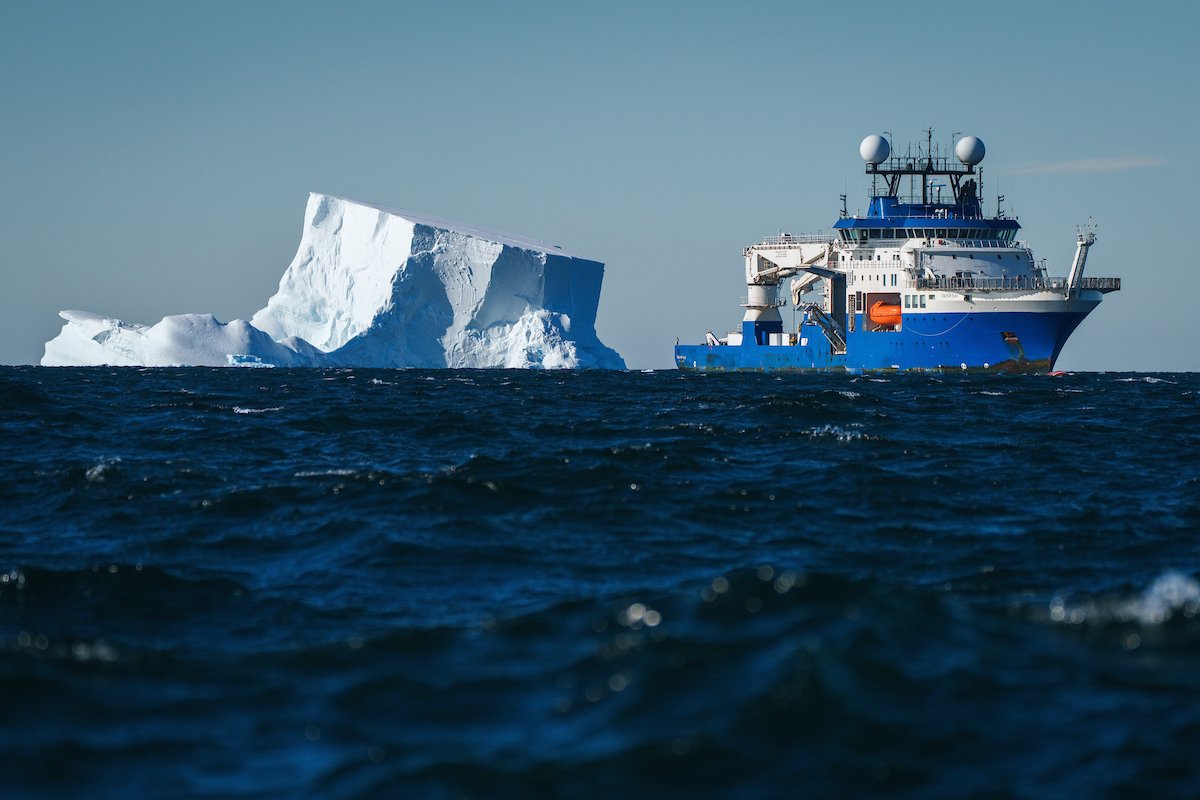Antarctica —
In January, an iceberg as large as Chicago separated from an ice shelf in Antarctica. By chance, a scientific research ship was nearby. The scientists jumped at the chance to study an area of the ocean floor that had been covered by ice for thousands of years. What they found surprised them.
The Falkor (too) is a research ship that belongs to the Schmidt Ocean Institute. The ship was already in Antarctica when the scientists aboard learned about the iceberg breaking off. The researchers quickly decided to drop what they were doing and go study the 209-square-mile (510-square-kilometer) area of sea floor below where the iceberg used to be.

(Source: Alex Ingle [CC BY-NC-SA], Schmidt Ocean Institute.)
Icebergs are so thick that it’s extremely difficult to study beneath them. This was a rare chance to explore an area of the sea floor that had been cut off by ice for a very long time. The researchers were curious to see what, if anything, might have existed in the dark waters below the ice.
Sunlight is normally the main source of energy for life in the sea. In open oceans, important food supplies fall slowly toward the bottom, even where it’s dark. But the thick ice meant no food supplies could fall beneath it. And since the ice had blocked out the light for thousands of years, the scientists weren’t expecting to find much life. But they were in for a surprise.

(Source: Alex Ingle [CC BY-NC-SA], Schmidt Ocean Institute.)
Using the ship’s remote-controlled underwater vehicle, the team explored the sea floor in the area for eight days. Even though the area had been in the dark for so long, the team discovered a rich and active variety of sea life.
“Hour by hour and day by day, we kept seeing more,” said Patricia Esquete, one of the chief scientists on the ship.

(Source: ROV SuBastian [CC BY-NC-SA], Schmidt Ocean Institute.)
Not only did they see fish and squid, they found giant sea spiders and octopuses, as well as corals and sponges. The scientists believe that some of the species they found have never been seen before.
The researchers took pictures and videos of the sea life they found, and also collected a few samples.

(Source: ROV SuBastian [CC BY-NC-SA], Schmidt Ocean Institute.)
The scientists also pushed long tubes into the ocean floor to collect samples of dirt and rock. The layers in these tubes should give the researchers more information about the creatures that have lived in the area and how the sea floor has changed over time.
Scientists are very interested in how such a wide variety of sea life could exist in such a dark, cold place. They suspect that food sources may have been swept under the iceberg by ocean currents. For that reason, they also had the undersea vehicle investigate the movement of the water deep undersea.

(Source: ROV SuBastian [CC BY-NC-SA], Schmidt Ocean Institute.)
One especially interesting question is how the life in this area will change in the future, now that the sea floor is no longer hidden beneath the ice, and light can reach it. That information could become even more important as global warming leads to more melting of the ice shelves and more icebergs break free.
